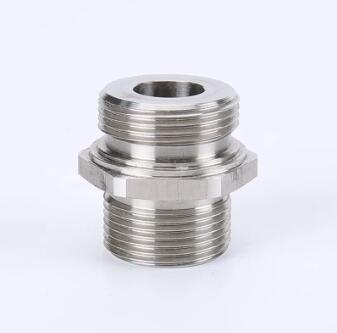Selecting the Right Pump Valve Type Joint for Your Application: A Comprehensive Guide
2024-08-26
Choosing the right Pump Valve Type Joint is crucial for the optimal performance of your fluid handling system. With various types and materials available, it can be challenging to determine which joint is best suited for your specific application. In this blog, we’ll provide a comprehensive guide to help you select the right pump valve type joint based on your system’s requirements, operating conditions, and industry standards.
Factors to Consider When Selecting a Pump Valve Type Joint
When selecting a pump valve type joint, several factors need to be taken into account to ensure that the joint will perform effectively and efficiently in your specific application. Here are the key considerations:
1. Operating Pressure and Temperature: The pressure and temperature conditions of your system are critical factors in selecting a pump valve type joint. High-pressure systems require joints that can withstand significant force without leaking or failing. Similarly, if your system operates at high temperatures, you’ll need a joint made from materials that can handle thermal expansion and contraction.
2. Fluid Compatibility: The type of fluid being transferred through the system plays a significant role in choosing the right joint. For instance, if you’re dealing with corrosive chemicals, you’ll need a joint made from materials resistant to corrosion, such as stainless steel or specific plastics. For water or non-corrosive fluids, more common materials like cast iron or bronze may suffice.
3. Size and Fit: The size of the pump valve type joint must match the dimensions of your piping and pump. It’s essential to ensure a proper fit to avoid leaks and maintain the integrity of the connection. Measuring the diameter and thread type (if applicable) is crucial in selecting the correct joint.
4. Ease of Installation and Maintenance: Depending on your system’s design and accessibility, ease of installation and maintenance may be a critical factor. For systems requiring frequent maintenance or disassembly, joints like compression or grooved joints may be preferable due to their simplicity and ease of use.
5. Vibration and Movement: If your system is subject to vibrations or movement, selecting a joint that can absorb these forces is important. Flexible joints or those with vibration-dampening features can prevent damage and extend the lifespan of the system components.
6. Regulatory and Industry Standards: Depending on your industry, there may be specific standards and regulations governing the types of joints you can use. For example, food and beverage applications may require joints made from FDA-approved materials, while fire protection systems may need to comply with NFPA standards. Ensuring compliance with these standards is essential for safety and regulatory approval.
Common Types of Pump Valve Type Joints and Their Applications
Now that we’ve covered the key factors to consider, let’s take a closer look at some of the most common types of pump valve type joints and their typical applications:
1. Flanged Joints:
- Best For: High-pressure and high-temperature applications, such as chemical processing, oil and gas, and water treatment.
- Features: Strong, reliable, and capable of handling significant force; require precise alignment and are typically more difficult to install and disassemble.
2. Threaded Joints:
- Best For: Low to medium-pressure systems, small pumps, and residential applications.
- Features: Easier to install and remove; not suitable for high-pressure or high-temperature systems due to the risk of thread damage or leaks.
3. Compression Joints:
- Best For: Systems requiring easy disassembly and maintenance, such as HVAC and plumbing.
- Features: Simple to install, no need for special tools; provides a secure seal but may not be suitable for very high-pressure applications.
4. Grooved Joints:
- Best For: HVAC, fire protection, and industrial piping systems.
- Features: Quick and easy to install, flexible, and can accommodate slight misalignments; ideal for systems where installation speed and ease of maintenance are critical.
5. Welded Joints:
- Best For: Permanent, high-pressure systems where leaks are unacceptable.
- Features: Extremely durable and leak-proof; however, they are difficult to disassemble and require skilled labor for installation.
Material Considerations for Pump Valve Type Joints
The material of the pump valve type joint is just as important as its design. Here are some commonly used materials and their advantages:
1. Stainless Steel:
- Advantages: Excellent corrosion resistance, high strength, suitable for high-pressure and high-temperature environments.
- Applications: Chemical processing, oil and gas, food and beverage, marine.
2. Brass:
- Advantages: Good corrosion resistance, easy to machine, and cost-effective.
- Applications: Water systems, residential plumbing, and low-pressure applications.
3. Cast Iron:
- Advantages: Durable and strong, cost-effective for large systems.
- Applications: Water treatment, HVAC, and industrial systems.
4. PVC and Other Plastics:
- Advantages: Corrosion-resistant, lightweight, and easy to install.
- Applications: Chemical handling, water systems, and applications requiring non-metallic components.
5. Rubber and Elastomers
- Advantages: Flexible, vibration-dampening, and good for absorbing movement.
- Applications: HVAC, water systems, and systems with significant vibration or movement.
Conclusion
Selecting the right pump valve type joint for your system is a crucial decision that can significantly impact the performance, efficiency, and safety of your fluid handling operations. By considering factors such as pressure, temperature, fluid compatibility, and regulatory standards, you can choose a joint that meets your specific needs. Whether you’re working with high-pressure chemical systems or low-pressure residential plumbing, understanding the various types and materials of pump valve type joints will help you make informed decisions and ensure the longevity and reliability of your system.



